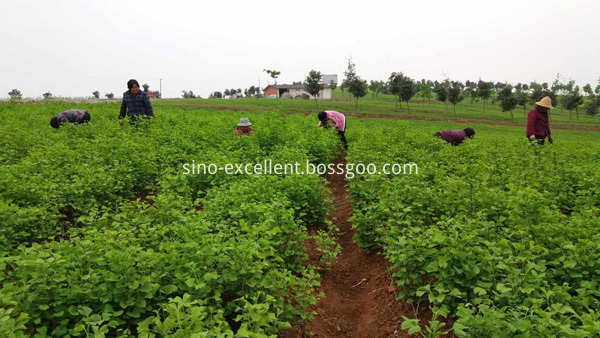The feed coefficient is calculated based on the amount of feed needed to produce a unit number of fish. Two traditional terms of the feed coefficient are often used by fishermen, ie, the biological coefficient of feed and the economic value of the feed coefficient. The biological feed coefficient refers to the net amount of feed needed to increase the weight of 1 kg of farmed fish. The economic significance of the feed coefficient must take into account all feed used.
Farms with very low feed coefficients usually have good farming practices, do not overfeed or underfeed, and maintain low mortality rates. Overfeeding or underfeeding results in an increase in the feed coefficient. Therefore, many farms abroad are equipped with surveillance systems such as underwater cameras and equipment for controlling feed supply and feeding.
The basic principle of feeding is that the cultured fish should be able to just eat, if the fish can fully eat, their stress will be reduced, it will provide the human high-quality fish. This requires the fisherman to master many techniques to accurately determine the quantity to be fed. With the development of the aquaculture industry, many equipment developed and developed abroad can help fishermen to determine the amount of feed they feed. Some specialized pond management and monitoring computers provide precise guidelines for the best feeding system.
In foreign countries, the feed coefficient of a high-efficient cockroach farm is close to 1, which is relatively low compared to terrestrial animals. This is mainly due to three reasons: the biological characteristics of fish, the lifestyle of the fish, and the nutritional concentration of fish feed. Fish have a very low basal metabolic need. Fish are warm-blooded animals (their body temperature changes with the external environment), so they do not need to feed like warm-blooded animals, poultry, and pigs and cows. For fish, floating in water consumes less energy than terrestrial animals. Trout can effectively convert feed into energy and build fish tissue. Carp feeds have a much higher nutrient level than pigs and cows because they do not require components such as fiber to fill. Squid uses oil and fat as their basic energy source. Therefore, the feed concentration is much higher than that of terrestrial animal carbohydrates as an energy source. Terrestrial animals are more capable of containing feed than fish. They eat low concentrations of feed and can grow well, which reflects the adaptability to the environment. Because salmon is a carnivorous fish, the terrestrial animals raised are basically herbivores.
For some fish species, the feed coefficient can be as low as 0.8, and more aquatic products can be produced without changing the current environmental and fishery facilities standards.
Farms with very low feed coefficients usually have good farming practices, do not overfeed or underfeed, and maintain low mortality rates. Overfeeding or underfeeding results in an increase in the feed coefficient. Therefore, many farms abroad are equipped with surveillance systems such as underwater cameras and equipment for controlling feed supply and feeding.
The basic principle of feeding is that the cultured fish should be able to just eat, if the fish can fully eat, their stress will be reduced, it will provide the human high-quality fish. This requires the fisherman to master many techniques to accurately determine the quantity to be fed. With the development of the aquaculture industry, many equipment developed and developed abroad can help fishermen to determine the amount of feed they feed. Some specialized pond management and monitoring computers provide precise guidelines for the best feeding system.
In foreign countries, the feed coefficient of a high-efficient cockroach farm is close to 1, which is relatively low compared to terrestrial animals. This is mainly due to three reasons: the biological characteristics of fish, the lifestyle of the fish, and the nutritional concentration of fish feed. Fish have a very low basal metabolic need. Fish are warm-blooded animals (their body temperature changes with the external environment), so they do not need to feed like warm-blooded animals, poultry, and pigs and cows. For fish, floating in water consumes less energy than terrestrial animals. Trout can effectively convert feed into energy and build fish tissue. Carp feeds have a much higher nutrient level than pigs and cows because they do not require components such as fiber to fill. Squid uses oil and fat as their basic energy source. Therefore, the feed concentration is much higher than that of terrestrial animal carbohydrates as an energy source. Terrestrial animals are more capable of containing feed than fish. They eat low concentrations of feed and can grow well, which reflects the adaptability to the environment. Because salmon is a carnivorous fish, the terrestrial animals raised are basically herbivores.
For some fish species, the feed coefficient can be as low as 0.8, and more aquatic products can be produced without changing the current environmental and fishery facilities standards.
Berberine,
Rutin,
Ginseng leaf & stem p.e. ,
Ginseng root p.e.
Ginseng flower p.e.
Green Tea P.e.,
5-HTP,
grape seed extract,
blackcurrant extract,
Monkfruit extract
stevia extract
Ginger root extract
Curcumin
Low pesticide residue
low solvent residue
low heavy metal
non-irradiation
non-GMO


Ginseng leaf p.e. ,Green Tea P.e., herbal extract, plant extract
Excellent Health Products Co.,Ltd , http://www.sino-excellent.com